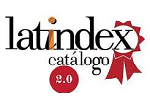| Qualis: B3 |
| Área do conhecimento: Administração Pública e de Empresas, Ciências Contábeis e Turismo |
Submissions
Submission Preparation Checklist
As part of the submission process, authors are required to check off their submission's compliance with all of the following items, and submissions may be returned to authors that do not adhere to these guidelines.- The contribution is original and unpublished, and is not being evaluated for publication by another journal; otherwise, it must be justified in "Comments to the editor".
- The submission file is in Microsoft Word, OpenOffice or RTF format.
- URLs for referrals were provided when possible.
- The text is spaced between lines of 1.5; uses a 12-point font; uses italics instead of underlining (except in URL addresses); figures and tables are inserted in the text, not at the end of the document in the form of attachments.
- The text follows the style standards and bibliographic requirements described in Guidelines for Authors, on the About the Journal page.
-
To ensure the integrity of the blind peer review, it is necessary:
a - The authors of the document do not include names and institutional or personal data when submitting.
b - In Microsoft Word documents (up to 2003), the author's identification must be removed from the document properties. To do this, the following steps must be taken: starting with File, in the main menu, and clicking in the sequence: File > Save as... > Tools (or Options on Mac) > Security options... > Remove personal information from file when saving > OK > Save. - Mandatory: Metadata were filled, with full name, e-mail, affiliation, title and Orcid of all authors. Registration with ORCID is free and can be obtained from the website: https://orcid.org/register
- The text follows the rules of the APA (American Psychological Association).
- The work has a maximum of 4 authors.
-
Submitted a cover page containing:
- Title of the article in the original language
- Title of the article in English (if in English, add Portuguese)
- Names of the authors
- A footnote for each author with title, institution, country and e-mail. - Submitted a Declaration of Authorization for Publication, according to the model.
Copyright Notice
1 - The texts published in the journal are the sole responsibility of their authors.
2 - Reproduction is permitted, provided the source and author are cited.
After the article is approved, the main author must send a declaration according to the model.
Privacy Statement
The names and addresses informed in this magazine will be used exclusively for the services provided by this publication, not being made available for other purposes or to third parties.








